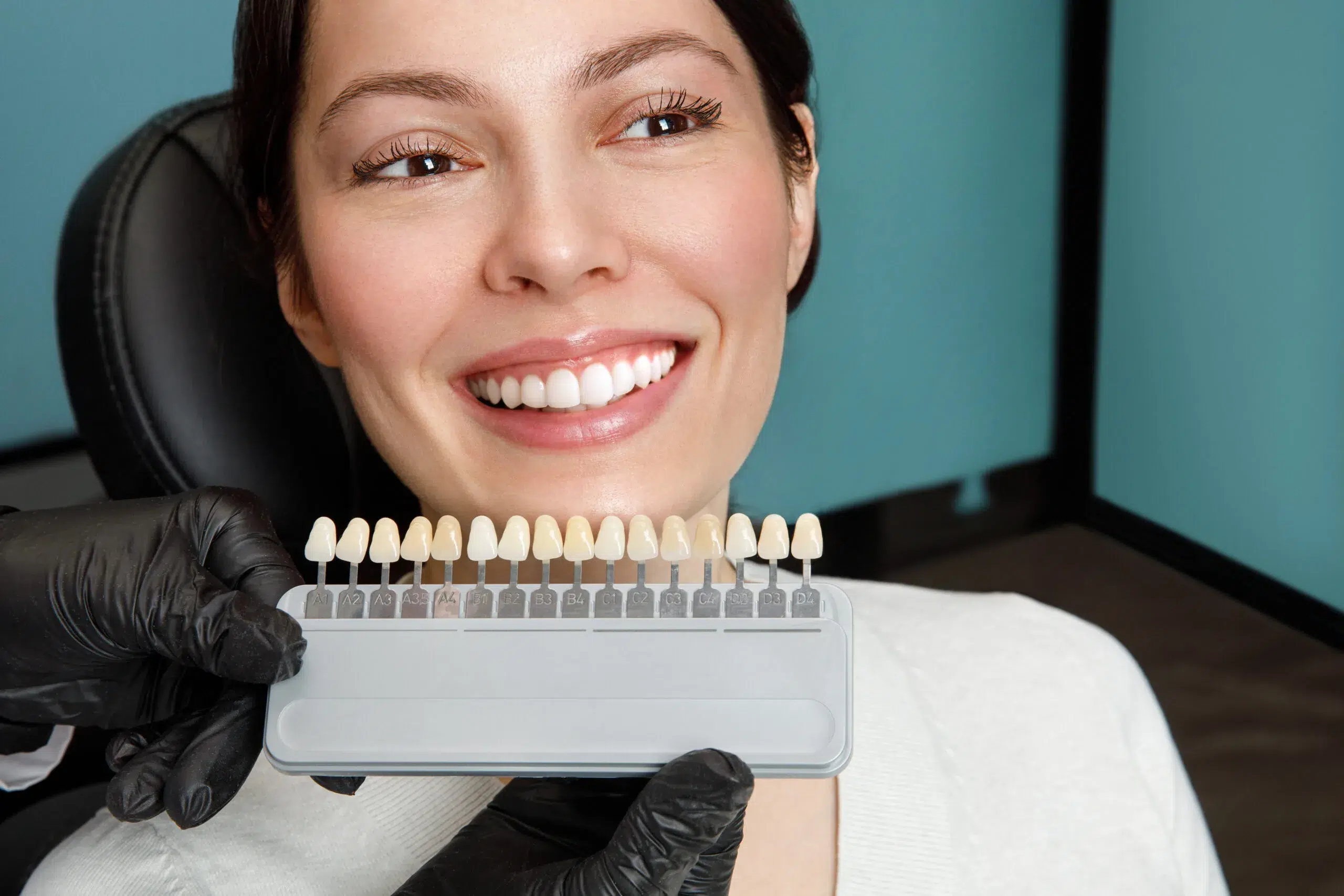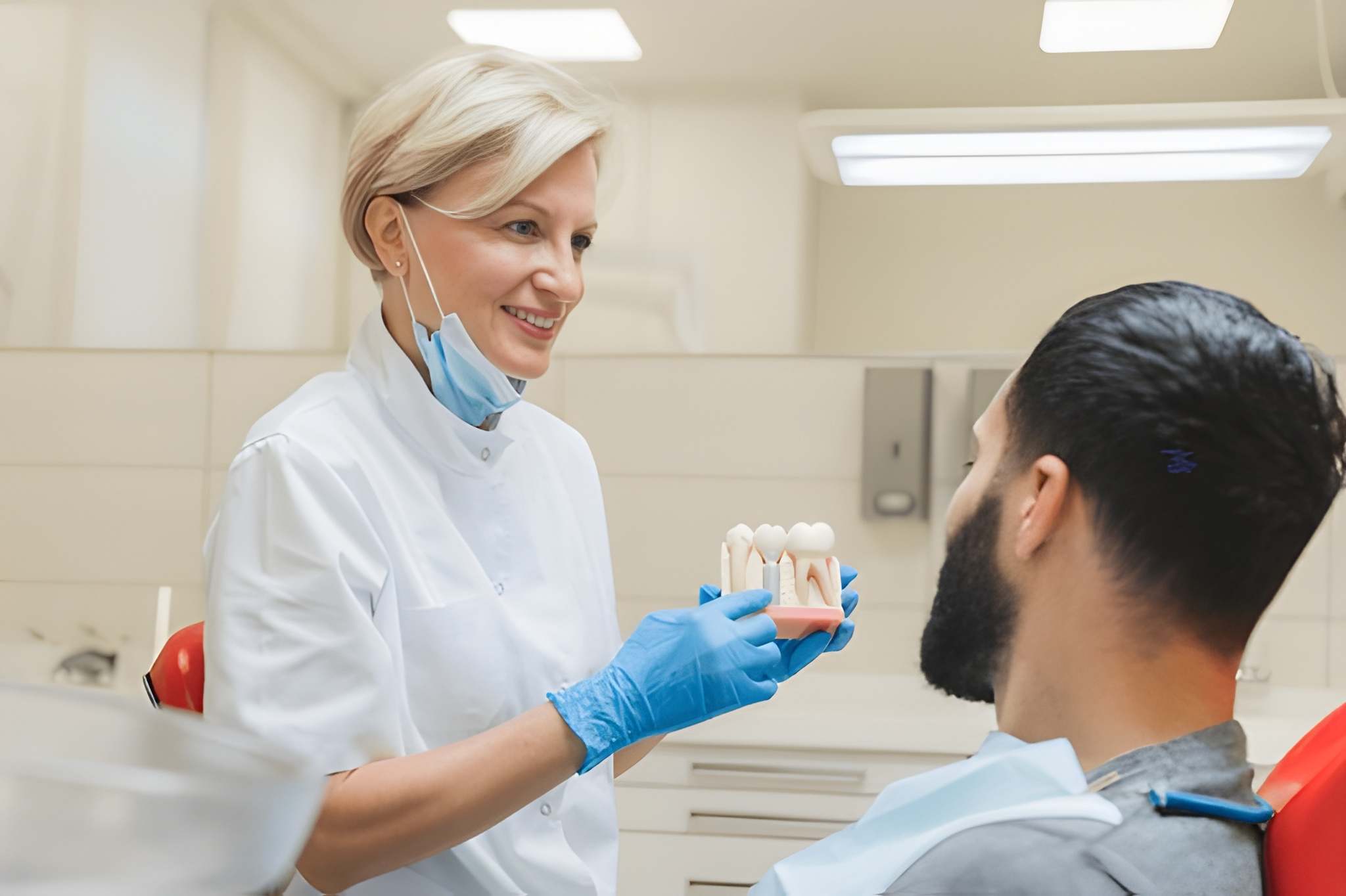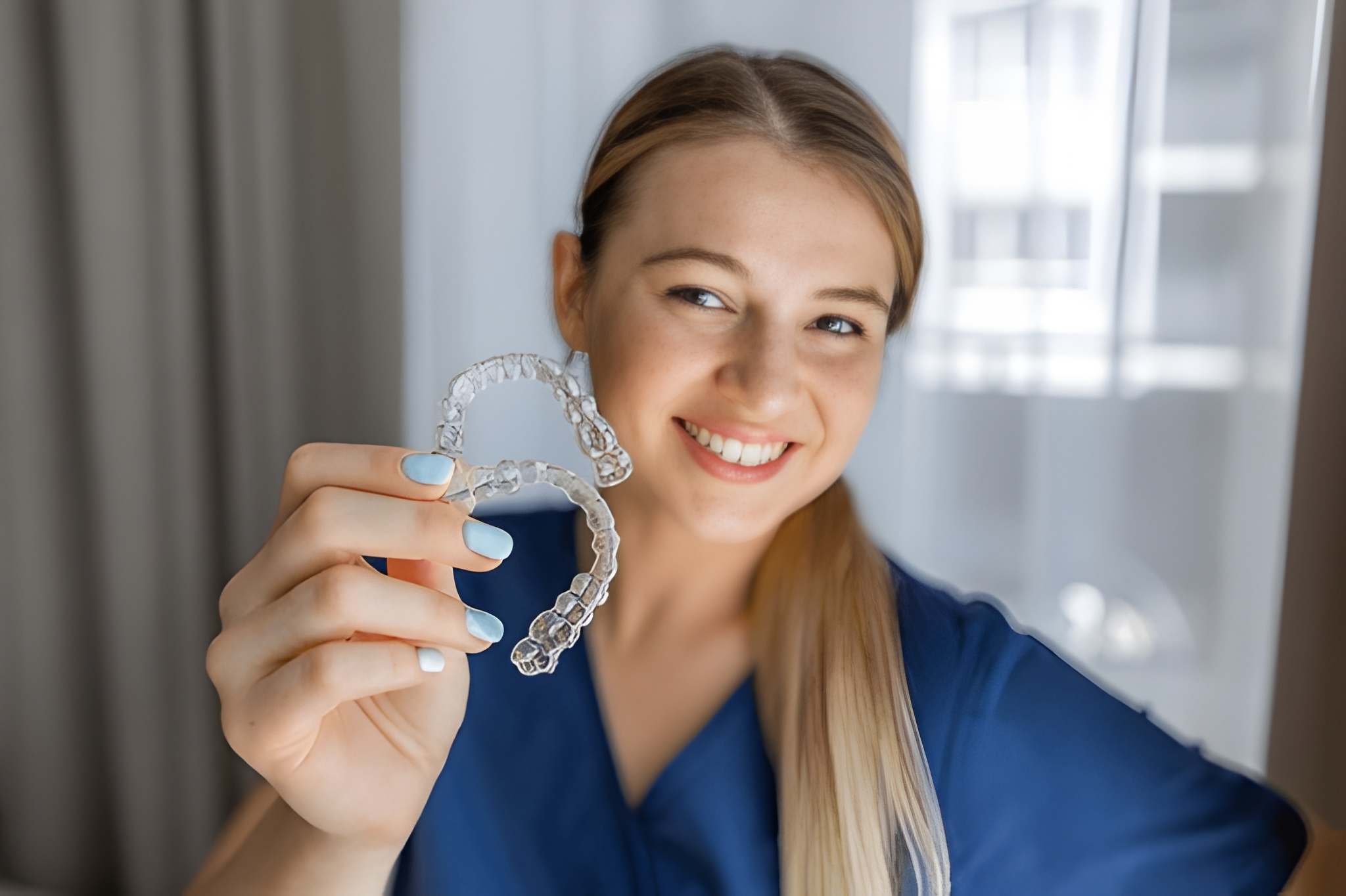Composite bonding, a popular cosmetic dental procedure, can significantly enhance the appearance of teeth by repairing chips, gaps, and discoloration. However, situations may arise where removal becomes necessary. In this article, we delve into the intricacies of can composite bonding be removed, exploring the process, reasons for removal, alternatives, cost considerations, risks, and the importance of professional intervention.
Understanding Composite Bonding
Composite bonding involves the application of a tooth-colored resin material to the teeth, which is then hardened with a special light. This procedure is commonly used to improve the shape, size, and color of teeth, providing a natural-looking result.
While composite bonding is durable and long-lasting, circumstances such as damage, wear, or changes in aesthetic preferences may warrant removal. Understanding the removal process is crucial for individuals considering this procedure.
What is Composite Bonding Removal?
Composite bonding removal is a dental procedure aimed at safely and effectively eliminating the bonded composite material from the teeth. This process requires precision and expertise to avoid damaging the natural tooth structure.
Explaining the Procedure
The removal process begins with an assessment of the bonded teeth to determine the most suitable approach. Local anesthesia is often administered to ensure patient comfort during the procedure. The bonded composite material is carefully removed using specialized dental instruments, followed by thorough polishing to refine the tooth surface.
Materials Used in Removal
Dental professionals utilize various tools and materials, including composite removal burs, polishing discs, and protective barriers, to facilitate the safe and efficient removal of composite bonding.
Reasons for Composite Bonding Removal
Composite bonding removal is a decision that individuals may make for various reasons, each stemming from specific concerns and considerations regarding their oral health and aesthetic appearance. Here are the primary reasons why individuals may choose to undergo composite bonding removal:
Damage or Wear
Over time, composite bonding material may undergo wear and tear, particularly in individuals who habitually grind or clench their teeth. This can result in chips, cracks, or erosion of the bonded surface, compromising both the aesthetic and functional integrity of the restoration.
Aesthetic Changes
Composite bonding is often utilized to enhance the appearance of teeth by correcting imperfections such as chips, gaps, or discoloration. However, changes in personal preference or evolving aesthetic standards may prompt individuals to seek removal of the bonded material. This could be due to dissatisfaction with the color, shape, or overall appearance of the bonded teeth, leading individuals to desire a different cosmetic solution or a return to their natural tooth structure.
Dental Health Concerns
While composite bonding is primarily a cosmetic dental procedure, underlying dental health issues may necessitate its removal for optimal oral health outcomes. For example, decay or cavities may develop underneath the bonded material, posing a risk of further damage or infection if left untreated. In such cases, the removal of composite bonding allows for proper diagnosis and treatment of underlying dental problems, ensuring the long-term health and integrity of the affected teeth.
Can Composite Bonding Be Removed at Home?
While the idea of removing composite bonding at home may seem tempting to some individuals, it is crucial to understand the potential risks and complications associated with DIY removal. Here’s why attempting to remove composite bonding at home is highly discouraged:
Complexity of the Process
Composite bonding removal is a delicate procedure that involves precise techniques to safely and effectively eliminate the bonded material from the teeth. Dental professionals undergo extensive training and education to acquire the necessary expertise in performing such procedures.
Risk of Damage to Teeth
DIY removal methods, such as using dental tools or chemical agents, can pose significant risks to dental health. Improper handling of dental instruments or abrasive materials can cause irreversible damage to the teeth and surrounding structures, including enamel erosion, gum irritation, or even fractures.
Potential for Infection
The use of unsterilized tools or improper hygiene practices during DIY removal increases the risk of infection and oral health complications. Dental professionals follow strict protocols to maintain a sterile environment and minimize the risk of bacterial contamination during procedures.
Lack of Professional Oversight
One of the most significant drawbacks of DIY removal is the absence of professional oversight and guidance. Dental professionals not only possess the knowledge and skills to safely remove composite bonding but also have the ability to assess the overall oral health and recommend appropriate treatment options.
The Composite Bonding Removal Process
Removing composite bonding is a meticulous process that requires the expertise of a skilled dental professional. The procedure ensures the safe and effective elimination of bonded material while preserving the integrity of the natural tooth. Here’s a detailed look at the steps involved in the composite bonding removal process:
Initial Assessment
The first step in the removal process is a thorough evaluation of the patient’s dental condition. During the initial assessment, the dentist examines the bonded teeth to determine the extent of bonding material and assess any underlying dental issues. This evaluation includes taking dental X-rays and discussing the patient’s concerns, goals, and expectations. The dentist will explain the removal process, potential risks, and alternative treatment options, ensuring the patient is fully informed before proceeding.
Application of Anesthesia
To ensure patient comfort, local anesthesia is administered to numb the treatment area. This step is crucial in minimizing discomfort during the removal procedure. The type and amount of anesthesia used will depend on the number of teeth involved and the patient’s pain threshold. For patients with dental anxiety, additional sedation options may be available to help them relax during the procedure.
Removal Procedure
Once the anesthesia has taken effect, the dentist begins the removal process using specialized dental instruments designed for precision and control. High-speed dental drills equipped with fine diamond or carbide burs are commonly used to gently and carefully remove the composite material. The dentist works meticulously to avoid damaging the natural tooth structure, often using magnification tools for enhanced accuracy.
Polishing and Refinement
After the bonded composite material has been successfully removed, the dentist focuses on polishing and refining the tooth surface. This step involves using polishing discs, rubber cups, and fine abrasive pastes to smooth and shine the teeth. Polishing not only enhances the aesthetic appearance but also ensures a smooth surface that is less prone to plaque accumulation and staining.
Recovery After Composite Bonding Removal
Recovery after composite bonding removal is generally straightforward, but it is important for patients to follow their dentist’s advice to ensure optimal healing and maintain oral health. Here’s what to expect during the recovery period and some key aspects of post-procedure care:
Post-Procedure Care
To promote healing and prevent any complications, patients should adhere to the following post-procedure care guidelines:
- Avoid Hard or Sticky Foods: Immediately after the procedure, it is important to avoid consuming hard or sticky foods that could potentially damage the newly exposed tooth surfaces or interfere with the healing process. Instead, opt for soft foods and liquids until the sensitivity subsides.
- Maintain Good Oral Hygiene: Practicing good oral hygiene is crucial for preventing infections and promoting healing. Patients should brush their teeth gently with a soft-bristled toothbrush and fluoride toothpaste, floss regularly, and use an antiseptic mouthwash if recommended by their dentist.
- Avoid Tobacco and Alcohol: Tobacco and alcohol can irritate the gums and delay the healing process. Patients are advised to avoid these substances during the recovery period.
Temporary Sensitivity
As mentioned, some individuals may experience temporary sensitivity to hot or cold temperatures after composite bonding removal. This sensitivity is typically mild and resolves within a few days to a week. In rare cases, the sensitivity may persist for a longer period, but it usually diminishes as the teeth adjust to the changes. If the sensitivity is severe or prolonged, patients should contact their dentist for further evaluation and management.
Follow-Up Appointments
Follow-up appointments are a critical component of the recovery process. These appointments allow the dentist to:
- Monitor Healing: The dentist will examine the treated teeth to ensure they are healing properly and there are no signs of complications such as infection or persistent sensitivity.
- Address Concerns: Any concerns or questions the patient may have can be discussed during these appointments. The dentist can provide additional guidance and make necessary adjustments to the treatment plan.
- Evaluate Outcomes: The dentist will assess the overall success of the composite bonding removal and determine if any further treatments or refinements are needed to achieve the desired results.
Alternatives to Composite Bonding Removal
Composite bonding removal is not always the only solution for addressing issues with bonded teeth. Depending on the specific circumstances and patient preferences, there are several alternative options that can be considered. Here’s an overview of some potential alternatives to composite bonding removal:
Repairing vs. Complete Removal
In many cases, minor issues with composite bonding can be effectively addressed through repairs rather than complete removal. This approach can save time, reduce costs, and preserve the existing dental work. Here are a few scenarios where repairs may be appropriate:
- Minor Chips or Cracks: Small chips or cracks in the bonded material can often be repaired by adding new composite material and blending it seamlessly with the existing bonding.
- Discoloration or Staining: If the composite bonding has become discolored or stained over time, the dentist can polish the surface to restore its appearance or add a thin layer of fresh composite material to cover the stains.
- Refinement of Shape: If the shape of the bonded teeth needs adjustment, the dentist can reshape and polish the existing bonding to achieve the desired look without removing it entirely.
Exploring Other Cosmetic Dentistry Options
For patients seeking significant aesthetic improvements or long-lasting solutions, other cosmetic dentistry procedures may be more suitable. Here are some alternative options to consider:
- Porcelain Veneers: Porcelain veneers are thin shells of ceramic material that are custom-made to fit over the front surfaces of the teeth. They offer a durable and highly aesthetic solution for correcting imperfections such as discoloration, chips, and gaps. Veneers are known for their natural appearance and resistance to staining.
- Dental Crowns: Dental crowns, also known as caps, cover the entire tooth structure and provide strong protection and enhancement for damaged or compromised teeth. Crowns can be made from various materials, including porcelain, ceramic, or metal, and are an excellent option for restoring both function and aesthetics.
- Teeth Whitening: If discoloration is the primary concern, professional teeth whitening treatments can effectively brighten the natural teeth and improve the overall appearance of the smile. Whitening can be done in-office or with take-home kits prescribed by the dentist.
- Orthodontic Treatments: For patients with alignment issues, orthodontic treatments such as braces or clear aligners (e.g., Invisalign) can correct misalignments and improve the overall appearance and function of the teeth. Orthodontic treatment can be combined with cosmetic procedures for comprehensive smile makeovers.
- Gum Contouring: For patients with uneven gum lines or excessive gum tissue, gum contouring can reshape the gums to create a more balanced and aesthetically pleasing smile. This procedure can be performed using laser technology for precision and minimal discomfort.
Risks and Complications
Although composite bonding removal is generally safe, there are potential risks and complications to be aware of, including:
Potential Risks Associated with Removal
- Damage to the natural tooth structure
- Sensitivity or discomfort during or after the procedure
- Infection or other complications
Addressing Complications
Dental professionals are trained to identify and address potential complications promptly to minimize the risk of adverse outcomes.
How to Choose a Qualified Professional for Composite Bonding Removal
When selecting a dental professional for composite bonding removal, consider the following factors:
Research and Referrals
Seek recommendations from friends, family, or trusted healthcare providers, and research potential providers online to learn more about their qualifications and experience.
Consultation Process
Schedule consultations with multiple dental professionals to discuss your treatment goals and evaluate their approach to composite bonding removal.
Evaluating Credentials and Experience
Choose a provider who is experienced in cosmetic dentistry and has a proven track record of successful outcomes with composite bonding removal procedures.
Conclusion
Composite bonding removal is a dental procedure that involves safely and effectively eliminating bonded composite material from the teeth. Whether due to damage, wear, or aesthetic changes, individuals may seek removal to address various concerns and achieve their desired smile goals. Professional intervention is essential to ensure safe and successful removal, and patients should carefully consider their options before proceeding with the procedure. By understanding the removal process, considering alternatives, and choosing a qualified dental professional, individuals can confidently navigate the journey towards a healthier, more beautiful smile.
FAQs
Is composite bonding removal painful?
Composite bonding removal is typically performed under local anesthesia to minimize discomfort during the procedure. Patients may experience some sensitivity or mild discomfort afterward, which can be managed with over-the-counter pain medication.
How long does the composite bonding removal process take?
The duration of the removal process depends on various factors, including the number of teeth involved and the complexity of the procedure. On average, the process can take anywhere from 30 minutes to an hour per tooth.
Will my teeth be damaged during the removal process?
Dental professionals are trained to perform composite bonding removal safely and effectively, minimizing the risk of damage to the natural tooth structure. However, there is always a small risk of minor damage, which can usually be addressed during the procedure.







